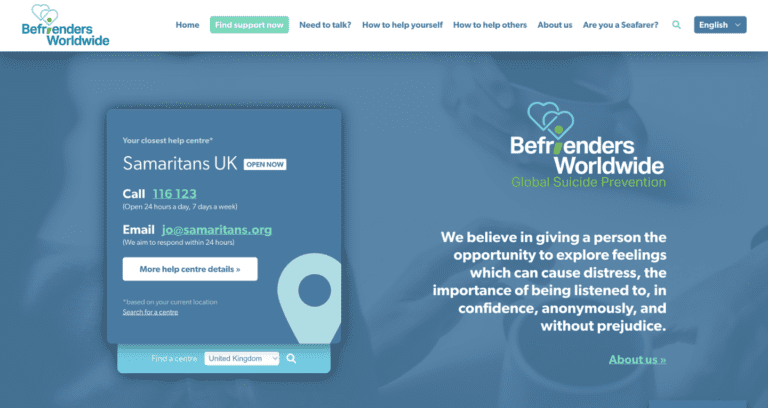
Abby Webb
Head of Search & Content // Founding Member
Abby head up our SEO campaigns, with a strong background in copywriting, content and paid search marketing campaigns.

If you want to have a positive impact on the world, you need to create the content your audience needs using the language they understand.
Let’s cut to the chase. Your organisation has a solution which is going to positively impact the world.
You also have a target audience that you need to take action before you can make that impact. That audience could be potential clients, it could be investors, it could be the government – it could be anyone upon whom your success, and positive impact, depends.
So how do you connect your cause to your community to make your potential positive impact a reality?
You need to create content for your website that directly addresses your audience’s needs using language they will understand.
This will:
This article will cover:
Maybe you’re working in the energy sector. Your organisation wants to install new EV chargers at retail sites across the country. These chargers would help reduce carbon emissions and create a new revenue stream for sites the chargers are installed on. It’s a win-win, right? So why are you struggling to get retail site owners on board?
Maybe you’re working in biotech, and your team has been researching an innovative new cancer treatment. When the time comes to get the next round of funding, however, you’re having a hard time getting the grants you need to take the project to the next level. It’s literally a cure for cancer! What else could they possibly want?
Maybe you work in finance, providing guidance that helps people get out of debt. The problem is you can’t seem to get people in debt to ring your hotline. Why not? Who wants to be in debt?
You might feel like you’ve got everything your audience could possibly ask for. If you’re struggling to get them engaged, however, content is likely the missing piece of the puzzle.
That content could be articles. It could be videos. It could be targeted ads or social media. What matters is that you’re creating content that intimately understands the audience you’re trying to reach, including their biggest anxieties, their hopes and fears, and the language they use.
If you want your audience to trust you, you need to prove your worth to them well before they take action.
This is a principle Marcus Sheridan explores in his book “They Ask, You Answer.” His philosophy is as simple as the book’s title: if you want people to trust your business, you need to put their needs first and create content which answers their questions, especially the tough ones.
This lesson is particularly important when your work has the potential to have a positive impact on the world, like working on Britain’s transition to Net Zero, for example. Why? Because from your perspective, the value of your work can seem so obvious that it doesn’t seem to need explaining.
Let’s look at some examples of content in action, and how it’s helping real organisations connect with audiences and have a positive impact on the world.
Often, your audience might be primed to make the decision you want, but something’s holding them back. These might be anxieties about cost, questions about government regulation, or even difficulty understanding certain industry terms.
In these cases, you need to create content which answers your audience’s questions, helping to calm their anxieties and build trust in you and your solution so that you can start having a positive impact together.

Step Zero is a resource hub which we recently launched in collaboration with Count Us In, an organisation that brings together people and organisations taking high impact steps to address climate change.
Step Zero was launched because Count Us In noticed an opportunity to encourage climate action online. 83% of consumers believe social media can help them learn how to live sustainably, but online creators are still reluctant to create sustainability content.
Why? Because those creators are often worried about accusations of greenwashing. They know there’s an opportunity, but they’re concerned that they lack the education and resources to successfully create informed content that encourages their followers to adopt sustainable habits (such as eating less meat for food influencers, buying from more sustainable brands for fashion influencers, and so on).
Step Zero directly addresses its audience’s anxieties by providing the solution they need – curated content which helps guide them through the ins and outs of creating content that encourages climate action. The site, for example, contains multiple resources to help creators avoid and spot greenwashing.
It’s a classic “they ask, you answer” situation. Step Zero is directly providing its audience with content to directly address the needs and anxieties holding them back from taking action, while helping them make the most of the opportunities that sustainability-related content provides.
Speaking to your audience, however, isn’t always so straightforward.
In some cases, you might create content which directly addresses your audience’s needs, and still find that engagement with your content is low.
In these cases, it’s likely that your audience is struggling to find your content to begin with. To solve this, you need to ensure that you’re speaking your audience’s language.

Glitch is an organisation that tackles online harassment and abuse towards women and people of colour. It’s a fantastic cause, but they found themselves facing an unforeseen challenge online.
Glitch offers free resources, signups for in-person workshops and more from their website. Their aim was to drive more traffic to their site to increase resource downloads and workshop uptake.
Research revealed that the language that they were using on the site closely reflected the language they used internally – rather than the language their audience was using.
While Glitch’s website was more likely to use terminology that reflected a more professionalised outlook on the challenges facing their audience. In contrast, their audience was more likely to ask for direct help with a specific problem, rather than using a search term related to a solution.
For example, while an organisation like Glitch might be more likely to use a term like “online accountability”, their audience might be more likely to search “what is doxxing?” or “how to report online abuse.”
This language gap was a huge opportunity for Glitch to increase its visibility in Google Search with just a few simple steps.
The first was producing a Glitch glossary on their site which clearly explained any and all terminology they used. This would help users better understand how Glitch could help them, while improving SEO for higher volume search results asking for definitions of terms (such as “what is doxxing?”).
The second action was to identify opportunities across both their website and paid search content to replace the language they use with the language their audience – victims and bystanders to online harassment and abuse – were likely to use.
These actions help people who are in need of Glitch’s services but aren’t aware of Glitch to find the organisation more easily. For example, someone who has experienced online harassment and searches “help with creepy messages” is far more likely to find Glitch-related content if language like “creepy messages” is used on their site and in their paid ads.
These opportunities don’t just apply to organisations like Glitch.
If you’re working in green energy and you’re trying to get access to a government grant, your research might reveal that some of the phrasing that seems perfectly natural to you in your sector is very different to the language used by government officials to describe what they’re looking for in a strong grant applicant.
If you’re working in finance to help people in debt, your research might reveal that they use very different language when describing their problem than your organisation does.

In some cases, the need to speak your audience’s language is more literal.
We have done a lot of work with Befrienders Worldwide, an international organisation providing help to those in need of urgent mental health support. They run 349 emotional support centres across 32 countries, with 25,000 volunteers providing support to roughly 7 million people each year.
We worked to create localised versions of their website that directed people to helplines in their language. As soon as users land on Befrienders Worldwide’s homepage, their nearest help centre and its phone number are displayed, wherever they are in the world. This is done by looking at each visitor’s language settings and approximate location to find the right help centre for them.
This didn’t just mean creating localised, translated versions of the homepage – it also meant using language which was easier to translate. That meant avoiding complex sentences and grammar, as well as any phrases or idioms that might not make sense when directly translated into different languages.
This might seem like a straightforward example of speaking your audience’s language, but in Befrienders Worldwide’s case, it’s helping them save lives.
You can’t just provide the content that will help your audience – you need to put it in the language that they will understand.
Creating content that speaks to your audience’s needs in the language they will understand can have a huge impact on your site’s visibility online.
Below is an anonymous example of stats from one client, who we created a content hub for, which was populated with several articles per month.
The content hub was launched in July 2023, and as you can see, the number of new organic keywords which the website ranked for skyrocketed in just a few months. In simple terms, there were far, far more relevant search terms which people could put into Google that would return this client’s website as a top result.
Now, it’s all well and good me telling you to create the content your audience wants in the language they’ll understand. But how do you actually know what they want, and what language they use?
There are plenty of tools which are invaluable in your audience research. The tool used for the line graph above, for example, is Semrush. Semrush lets you see what keywords a website is ranking for on Google Search, as well as the volume of searches for a keyword (and related questions to do with that keyword) per month.
Understanding your audience will take time. In some cases, your content itself will be part of the experiment. Which videos or articles are the most people watching? Which are leading to the most conversions? Which aren’t, and what are the differences between them and your successful content?
Content is a hugely powerful tool for connecting your cause to your community. When you’re doing work that’s going to have a positive impact on the world, you can’t afford to ignore it. You want your audience to engage with your solution – to invest, to donate, to buy. Content turns the tables – to get your audience engaged, you first have to engage directly with them.

Head of Search & Content // Founding Member
Abby head up our SEO campaigns, with a strong background in copywriting, content and paid search marketing campaigns.
View my other articles and opinion pieces below
The energy sector is growing and changing, with renewable energy expected to compose up to half of the UK’s electricity by 2025. In today’s landscape, energy companies need to harness the power of digital marketing to effectively connect with their diverse audiences and stand out in a crowded marketplace. First, it’s important to understand that […]
